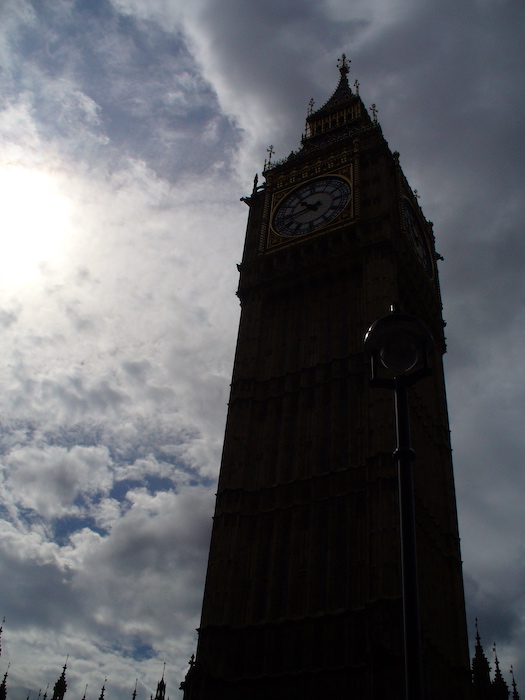
As part of a discussion about the worldwide syncronisation of time, Yuval Noah Harari writes:
During World War Two, BBC News was broadcast to Nazi-occupied Europe. Each news programme opened with a live broadcast of Big Ben tolling the hour -- the magical sound of freedom. Ingenious German physicists found a way to determine the weather conditions in London based on tiny differences in the tone of the broadcast ding-dongs. This information offered invaluable help to the Luftwaffe. When the British Secret Service discovered this, they replaced the live broadcast with a set recording of the famous clock.1
I'd never heard this story before. Harari doesn't provide any sources. Is it true?
At first glance, it's plausible. Meteorological observations over enemy-controlled areas were important for planning operations (one U-boat crew even set up an automated weather station on the Labrador coast). Knowing the weather over London would be useful for the Luftwaffe. In terms of physics, the idea is possible -- in theory. Weather conditions like temperature, humidity and air pressure do affect sound propagation, and by comparing successive Big Ben broadcasts it might have been possible to get useful information about how these conditions were changing. But in practice it seems that the differences are subtle and add up only over large distances. With 1940s-era recording, broadcast and receiving equipment, it seems extremely unlikely that any such differences could be measured accurately enough to be usable.
If the story as given is not correct, then where did it come from? My first thought was that this story originated as a wartime urban legend, or folk strategy, designed to explain why such a prominent landmark as Big Ben (to use the common name; properly, the Elizabeth Tower of the Palace of Westminster [edit: even more properly, the Great Bell in the clock in the Elizabeth Tower of the Palace of Westminster -- see comments]) wasn't bombed -- usually because of its practical or sentimental value to the Germans (most famously, Senate House was supposedly spared because Hitler wanted to use it as his British headquarters).2 I even managed to find a version of Harari's story put forward as the answer to the question 'Why wasn't Big Ben bombed by the Germans during the Blitz in WW2?' But the explanation seems a bit scientifically sophisticated for a rumour.
So, instead of looking at the causes I tried looking for the effect. Did the BBC actually use recordings of Big Ben during the war, rather than a live broadcast? There was some press speculation about this, but it seems that it did continue its prewar practice:
The transmissions we hear are direct -- not gramophone records. We had proof of this on November 26, 1943, when the wailing of London's sirens was heard during the striking of the clock.3
But recordings were used in the summer of 1944:
Big Ben went back on the air on Friday night [8 September 1944] for the first time since last June, and the chimes heard before the nine o'clock news were the 'real thing' -- not the recorded chimes which the B.B.C. substituted.
It was because of the danger of giving an indication to the enemy whether an air raid was taking place or not, that it was taken off the air.
'The decision to resume the "live" broadcasts was taken by the Ministry of Home Security,' said a B.B.C. official.4
So this confirms part of Harari's story, that the BBC ceased live broadcasts from Big Ben for fear that they could aid the enemy. The precise reason given contradicts the one he gives, however. But on the face of it, this new reason seems to make even less sense: presumably the Germans would know if they were carrying out an air raid or not! So perhaps this is just another wartime obfuscation?
No. As astute readers will have figured out already, the only 'air raids' anyone in London was worried about in the summer of 1944 were the V-1 flying bomb attacks. The Germans (the Wehrmacht, not the Luftwaffe) of course knew when they launched V-1s, but because they were not very accurate, not where they were launching them to. Aiming for Big Ben -- right in the political heart of London -- and listening for an explosion at the start of a BBC news broadcast would have been a useful check. The British were of course very concerned to avoid giving the Germans this kind of intelligence. As is well-known, they used their complete penetration of the German intelligence network in Britain to make it look like the V-1s were overshooting London, which the Germans naturally tried to correct the wrong way, making them fall short. Shutting down Big Ben's live broadcast would have been a simple, if minor, part of this scheme.
The risk window was widened by the Silent Minute, an additional 60 seconds of silence broadcast (apparently, though why?) live after the peals of Big Ben, so that listeners could pray together for peace. As Allan Williams explains:
Between 16 June and 18 September 1944, however, a recording synchronised with Big Ben replaced the live broadcast in order that no information would be provided to the enemy during the flying-bomb attacks. The fear was that Flak-Regiment 155 (W) might fire a V1 towards St Stephen's Tower, timing it to arrive and explode during the Silent Minute. Not only would the sound of an explosion cause anxiety among listeners but over successive firings the Germans would be able to zero in their flying bombs on the heart of the government quarter. The ploy did, however, require the programme engineer to start the recording at precisely the right moment, and was recorded on one occasion to have led to a telegram from a listener asking whether Big Ben had taken to drink after a repeating groove in the record made the deception even more obvious.5
So, half of Harari's story is right, but half appears to be quite wrong.
Thanks to Richard Scully for the tip.
![]() This work is licensed under a Creative Commons Attribution-NonCommercial-NoDerivatives 4.0 International License.
Permissions beyond the scope of this license may be available at http://airminded.org/copyright/.
This work is licensed under a Creative Commons Attribution-NonCommercial-NoDerivatives 4.0 International License.
Permissions beyond the scope of this license may be available at http://airminded.org/copyright/.
- Yuval Noah Harari, Sapiens: A Brief History of Humankind (Harper, 2015), 354. [↩]
- The fact that Big Ben was bombed -- suffering minor damage on the last night of the Blitz -- is irrelevant for this discussion. [↩]
- Northern Miner (Charters Towers), 23 June 1944, 8. [↩]
- Citizen (Gloucester), 9 September 1944, 6. [↩]
- Allan Williams, Operation Crossbow: The Untold Story of Photographic Intelligence and the Search for Hitler's V Weapons (London: Arrow Books, 2014), 223. [↩]



Roger Horky
I thought Big Ben was the name of the bell, not the tower or the clock.
Nick Beale
Analysing minute differences in broadcast sound from Germany? Does no one remember the errrrr… "clarity" of AM radio, especially after dark?
Brett Holman
Post authorRoger:
Quite right! If one is going to be pedantic, it's probably best to actually be correct...
Nick:
Apparently we all live in an FM (if not internet) radio world, now!
Stephen
This reminds me of the Russians knowing the shape of the SR-71 by the thermal fingerprint (its shadow) it left on the ground.
The developers removed it from its radar testing pole every time they knew a spy satilite was due to be overhead.
This tail may have some merit… Signals are stronger or weaker over distance depending on the atmospheric conditions. Years ago when the conditions were right I could talk on a CB radio to people from here in Australia to people in New Zealand. “Skip” was the term used when it’s active.
Of coarse the Germans might have heard a background pitterpatter or clap of thunder. That information would certainly yield vital and current weather conditions.
Cheers, Stephen.
Brett Holman
Post authorAnomalous propagation is not what Harari's talking about, though. In fact the atmospheric effect he's talking about has to do with changes in audio frequencies, not radio (just that the changes are then supposedly being transmitted over radio).
Your other suggestion is more likely, especially since we know the Germans had very limited meteorological information from the west and the north. But I'm not sure how critical (as opposed to useful) weather information was for V-1 launches. The explanation given by Williams seems plausible to me.
Pingback:
222 interesting facts about World War II - Only Fun Facts
Pingback:
222 interessante Fakten über den Zweiten Weltkrieg - Only Fun Facts
Pingback:
222 Datos interessantes sobre la Segunda Guerra Mundial - Only Fun Facts